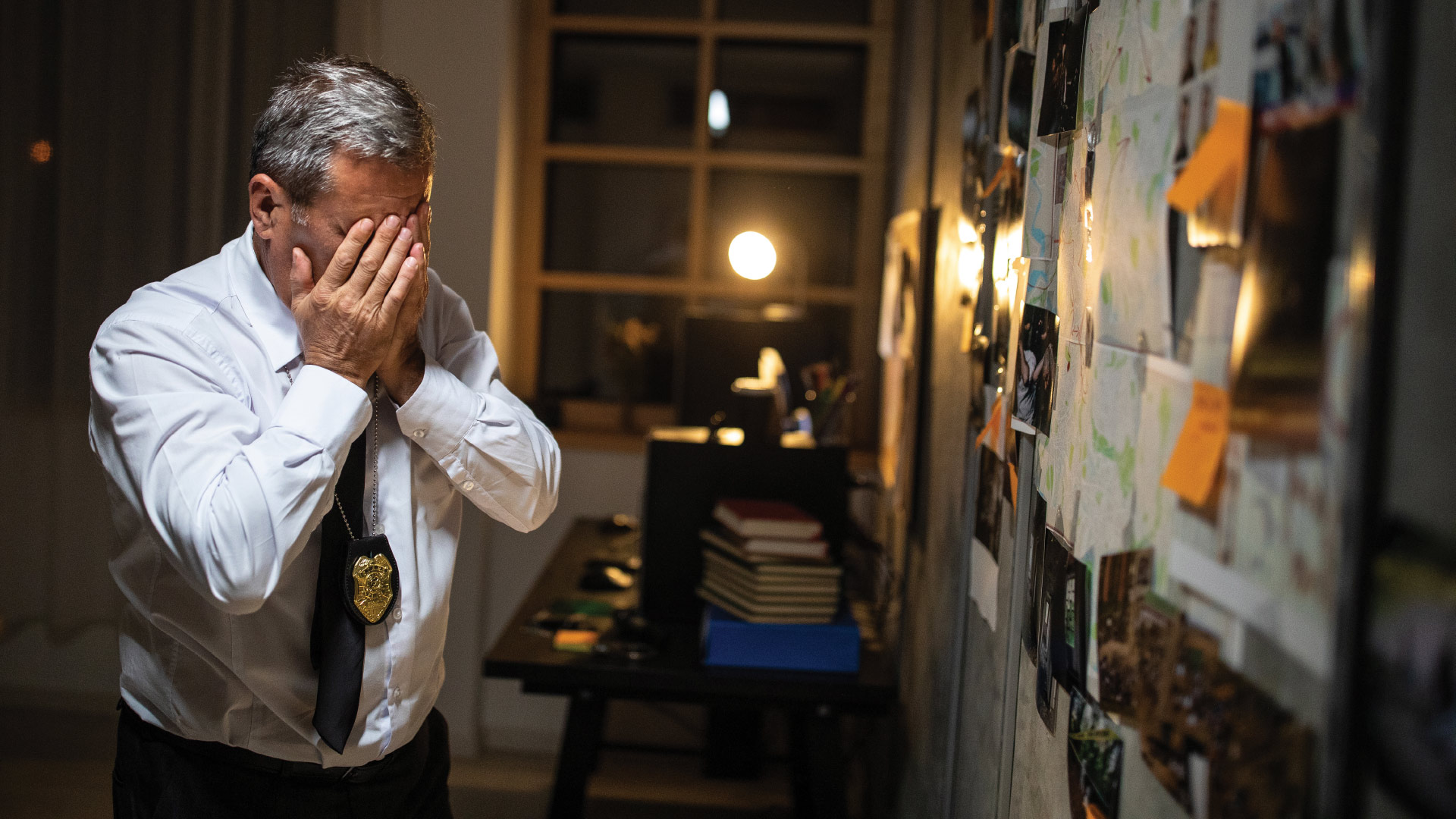
Visual simulation training is becoming more and more popular among police departments. Some departments also utilize this type of training within re-integration programs after a critical incident or an officer-involved shooting (OIS). Whether virtual or real-time training, these scenarios can actually bring you right back to the traumatic event itself (a flashback). Consider the following hypothetical, but probabilistic examples:
- Officer Kelly, a past victim of domestic violence, has a flashback while “rolling” in jiu-jitsu practice.
- Jim and his partner respond to a call involving a suspect armed with a knife. Jim feels fine after the call. Weeks later, after a training scenario involving an armed suspect, Jim starts to have nightmares about the call.
- After an OIS, Tamara is required to go through a visual simulation practice. During the practice, she feels her heart racing, chest tightening, has difficulty catching her breath and panics. She worries about how she is going to respond to actual calls if this is how she felt during the simulation.
If a training scenario activates your trauma, don’t panic. What this means is that you may need to slow down your pace but ultimately keep practicing.
What’s going on in the above scenarios? Should Kelly stop practicing jiu-jitsu? Can Jim and Tamara return to work? Firstly, it is important to note that traumatic responses such as having a flashback, a heightened startle response or sleep disturbances do not mean that someone will go on to develop PTSD. However, these reactions should be monitored and addressed.
It may surprise you to hear that oftentimes when first responders have to deal with their own “negative” emotions, such as sadness or fear, they often turn to avoidance. Avoidance comes in many forms, from telling yourself to stop trying to think about something (that will only make it worse, by the way), to poor coping strategies, such as using alcohol to numb the emotional pain. Avoidance only works in the short term. In the long term, avoidance will only make the problem worse and make it more likely, if not completely guaranteed, that trauma will come back to bite you. This is why most trauma therapies have a component of what is called “exposure.”
The exposure component means you have to face your trauma, which is not only incredibly scary and exhausting for most people but also means that you are likely to be re-experiencing the trauma. Exposure is also what is happening during training. Your brain and body are “exposed” to some aspect, a reminder of a past traumatic situation, which is what leads to those uncomfortable symptoms you may normally be trying to avoid.
If a training scenario activates your trauma, don’t panic. What this means is that you may need to slow down your pace but ultimately keep practicing. At the same time, do not push yourself beyond what you feel you can handle, and take breaks as needed. If a training scenario activates a past traumatic event, you can try one of these strategies:
- Practice visualizing the scenario before returning to practice. Visualization actually activates the same regions of your brain as physically seeing something in practice. Take deep breaths as you visualize and note your body’s response.
- Talk about the traumatic scenario or write it down. These are ways to help your brain process the trauma and create less intensive exposure. If you write it down, do not re-read what you wrote, as that can reactivate the trauma.
- Make stress reduction and exercise a priority. Downtime is essential. Avoid burnout by regularly engaging in activities you find pleasurable and that allows you to recharge. Find an exercise you enjoy to prevent a buildup of stress chemicals in your body. The time you least want to engage in stress-relieving activities is the most important time to do it.
After implementing some of the above strategies, reevaluate how you are doing. Monitor changes in functioning related to concentration, appetite, mood and sleep. If you feel that your symptoms are worsening over time, reach out to your peer support, chaplain or EAP. These supports can help you develop additional strategies, offer insight and problem solve with you.
As seen in the April 2022 issue of American Police Beat magazine.
Don’t miss out on another issue today! Click below:






